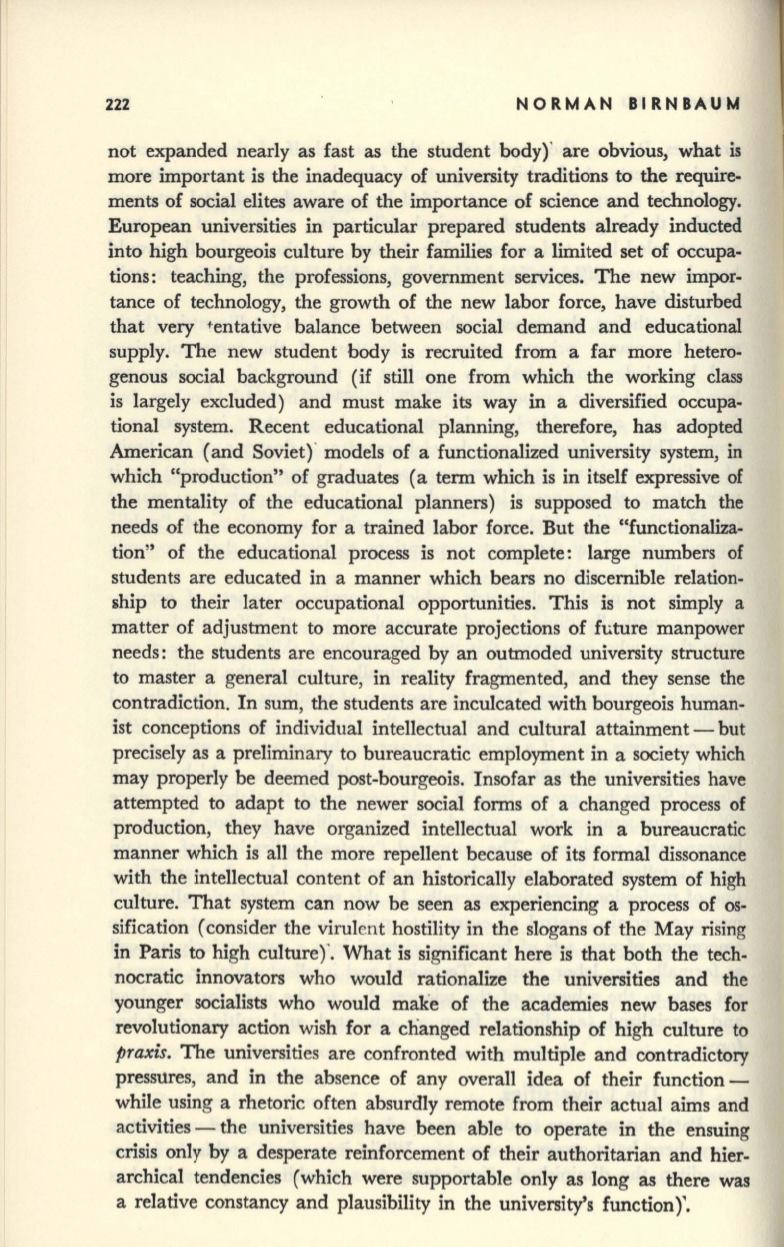
222
NORMAN BIRNBAUM
not expanded nearly as fast as the student body)' are obvious, what is
more important is the inadequacy of university traditions to the require–
ments of social elites aware of the importance of science and technology.
European universities in particular prepared students already inducted
into high bourgeois culture by their families for a limited set of occupa–
tions: teaching, the professions, government services. The new impor–
tance of technology, the growth of the new labor force, have disturbed
that very tentative balance between social demand and educational
supply. The new student body is recruited from a far more hetero–
genous social background (if still one from which the working class
is largely excluded) and must make its way in a diversified occupa–
tional system. Recent educational planning, therefore, has adopted
American (and Soviet)' models of a functionalized university system, in
which "production" of graduates (a term which is in itself expressive of
the mentality of the educational planners) is supposed to match the
needs of the economy for a trained labor force. But the "functionaliza–
tion" of the educational process is not complete: large numbers of
students are educated in a manner which bears no discernible relation–
Ilhip to their later occupational opportunities. This is not simply a
matter of adjustment to more accurate projections of future manpower
needs: the students are encouraged by an outmoded university structure
to master a general culture, in reality fragmented, and they sense the
contradiction. In sum, the students are inculcated with bourgeois human–
ist conceptions of individual intellectual and cultural attainment - but
precisely as a preliminary to bureaucratic employment in a society which
may properly be deemed post-bourgeois. Insofar as the universities have
attempted to adapt to the newer social forms of a changed process of
production, they have organized intellectual work in a bureaucratic
manner which is all the more repellent because of its formal dissonance
with the intellectual content of an historically elaborated system of high
culture. That system can now be seen as experiencing a process of os–
sification (consider the virulent hostility in the slogans of the May rising
in Paris to high culture
r.
What is significant here is that both the tech–
nocratic innovators who would rationalize the universities and the
younger socialists who would make of the academies new bases for
revolutionary action wish for a changed relationship of high culture to
praxis.
The universities are confronted with multiple and contradictory
pressures, and in the absence of any overall idea of their function–
while using a rhetoric often absurdly remote from their actual aims and
activities - the universities have been able to operate in the ensuing
crisis only by a desperate reinforcement of their authoritarian and hier–
archical tendencies (which were supportable only as long as there was
a relative constancy and plausibility in the university's function),.


